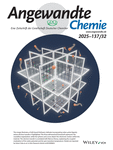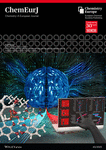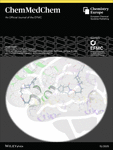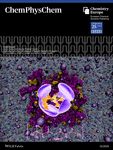Journal list menu
Press Release
Angewandte Chemie International Edition ,
doi: 10.1002/anie.201505829
Nr. 33/2015
August 17, 2015
The Army Sees Red
Red-burning pyrotechnic flare formulations without chlorine
Contact: Ernst-Christian Koch, Lutradyn Energetic Materials Science & Technology (Germany)
Registered journalists may download the original article here:
Chlorine-Free Red-Burning Pyrotechnics
The carmine color of pyrotechnic flares used in military and civilian environments arises from the combustion of strontium salts, some based on chlorides. The military-launched search for chlorine-free formulations has recently ended up with a new composition that overrides the long-standing rule that such formulations require the presence of a chlorine source. The study, which highlights the avoidance of the formation of carcinogenic compounds, has been published in the journal Angewandte Chemie.
Nobody wants to miss the deep red colors in commercial fireworks, and a deeply saturated red-burning flame is also indispensable in military and civilian distress signal lights. The characteristic red colors arise from the presence of gaseous strontium monochloride. Therefore, chlorine compounds are always added into the flare formulations although the typically added chloroorganics such as PVC form highly carcinogenic substances upon combustion. Therefore, defense scientists Jesse Sabatini and Ernst-Christian Koch and their colleagues searched for ways avoiding the chloroorganics. "These formulations typically contain a metallic fuel such as magnesium, strontium nitrate, as the oxidizer, an organochlorine compound such as poly(vinyl chloride) (PVC), an organic binder, and sometimes auxiliary chlorine sources.", they write. Unfortunately, simply leaving out the chloroorganics only leads to the predominant formation of condensed and gaseous strontium oxides, which leads to an all-over washed-out orange flame color, so the scientists found out.
In contrast, using less magnesium but adding a nitrogen-containing organic ingredient (5-AT) served well for this purpose, yielding an adequate dominant wavelength in the flame and spectral purity. 5-AT is known as a gas-generation compound used for auto-ignition purposes such as in vehicle air bags or for pyrotechnics purposes. Another nitrogen organic compound, hexamine, gave similar results for the flame. Although the resulting emission spectrum of the flame lacked the typical bands for strontium monochloride, this loss appeared very well compensated by the strong emission peaks of the formed strontium hydroxide and strontium hydride." The present study has shown that it is feasible to obtain both high intensity and highly saturated red flames exclusively based on SrOH with concomitant SrH emission," the authors conclude.
The key to success was to keep the incandescent and orange-emitting strontium oxide as low as possible, which was simply done by adding reducing and concomitantly explosive compounds such as the nitrogen- and hydrogen-containing organocarbons. Fortunately, the new pyrotechnical formulations can appparently be handled with the same safety requirements as the old ones, only that they no longer release carcinogenic compounds.
(2897 characters)
About the Author
Dr. Koch is specialist in energetic materials. He was head of several laboratories and programs in organizations dealing with explosives and defence issues, most recently the NATO Munitions Safety Information Analysis Center (MSIAC). He founded Lutradyn – Energetic Materials Science & Technology Consulting company in Kaiserslautern (Germany). Dr. Sabatini is scientist at US Army Research Laboratory, Maryland (USA).






































